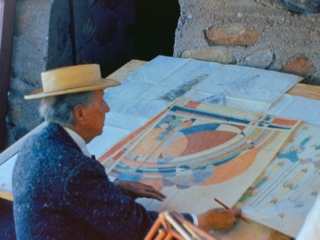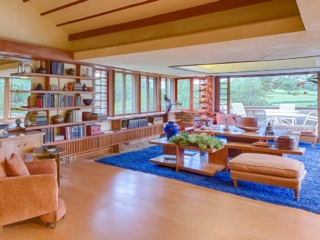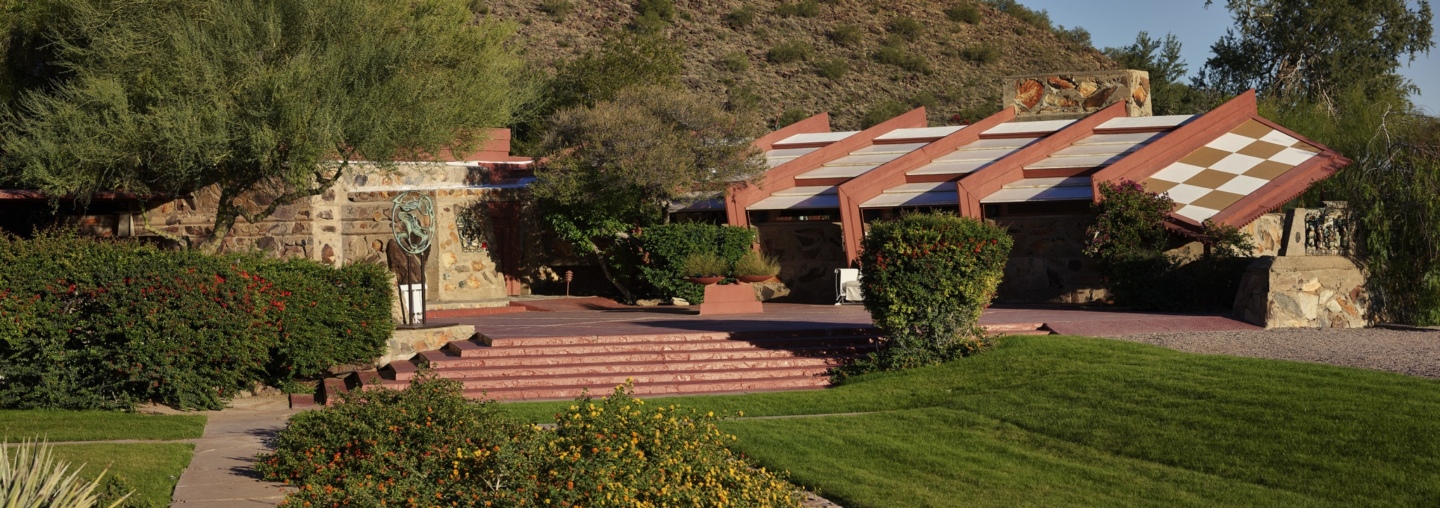
5 Ways to Bring Frank Lloyd Wright’s Organic Principles to Your Home
Frank Lloyd Wright Foundation | Oct 13, 2021
As remote working is the new normal, explore five ways to bring Frank Lloyd Wright’s organic principles to your home.
Frank Lloyd Wright believed that architecture and its surrounding environment should be integrated into an organic whole. Growing up in the verdant hills of rural Wisconsin cultivated in him an enduring love of plants, trees, and landscapes, a passion he expanded upon when he moved to Arizona and encountered the Sonoran Desert. Understanding that creating harmony and peace in our surroundings is important to wellbeing, especially since working remotely has become new normal the past year and a half. Explore a few ways to bring Frank Lloyd Wright’s organic principles to your home that will create a comfortable and convenient space to get you in your work zen.
ARRANGE PLANTS INTO NATURALISTIC GROUPINGS
Wright preferred irregular and informal arrangements of trees and plants. He was critical of formal gardens and topiary—trimming yews and boxwood into animal shapes—calling them “tortured and forced, a perverted ideal.” Instead, he advised grouping foliage “according to its true nature—that is, as it naturally grows best to show its full beauty as a lilac, a syringa, an elm, an oak, or a maple.”
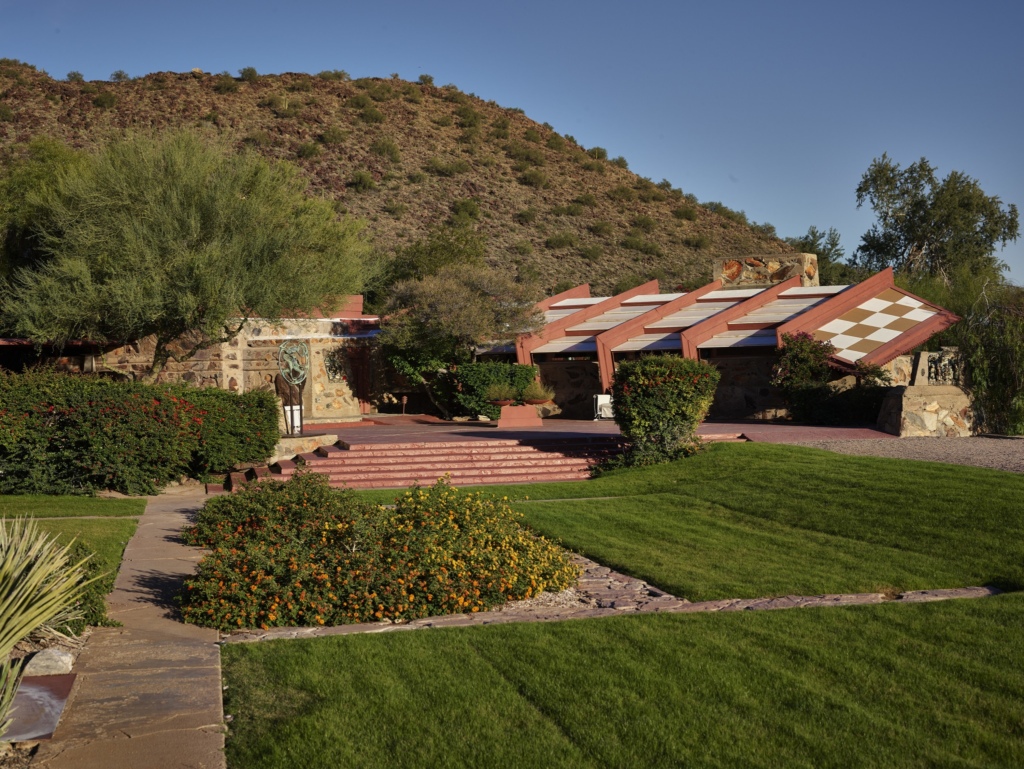
SELECT PLANTS WITH SCULPTURAL QUALITIES
Wright favored plants that appear almost architectural in their texture, shape, and form. In the Midwest, he often used bur oak and sumac trees, as well as clusters of wildflowers and prairie grasses for their stick-like stems and seedpods. The tectonic character of desert plants was particularly appealing to him, especially cactuses such as the saguaro, ocotillo, and cholla, as well as palo verde and mesquite trees. Interior arrangements of rocks, cuttings, ocotillo ribs, or other sculptural elements are another way to introduce tectonic features into your environment.

CHOOSE LOCAL PLANTS AND MATERIALS
Wright favored the use of indigenous plants and materials. Native plant species require less maintenance than imports and contribute to a naturalistic garden design that respects regional landscapes. When Wright did introduce nonnative plants, such as the colorful bougainvillea he used in the Southwest, he chose species from similar climates so that they would thrive. Oftentimes, Wright even incorporated soil and rocks from a site directly into his architecture, as in the desert masonry walls we see at Taliesin West.
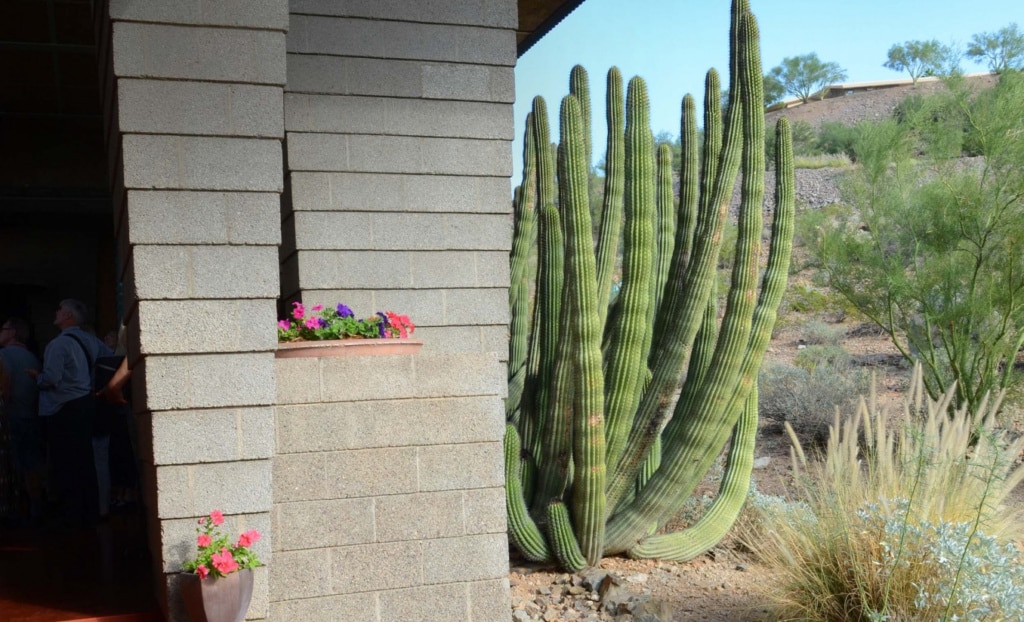
INCORPORATE SCULPTURE, URNS, AND FLOWERS
Consider planting flowers in window boxes, urns, or on trellises to blur the distinction between garden and house. Sculptural elements positioned at the end of a pathway or entrance to a garden space also create focal points for the eye to rest and complement plantings. Choose sculpture in scale with its surroundings.
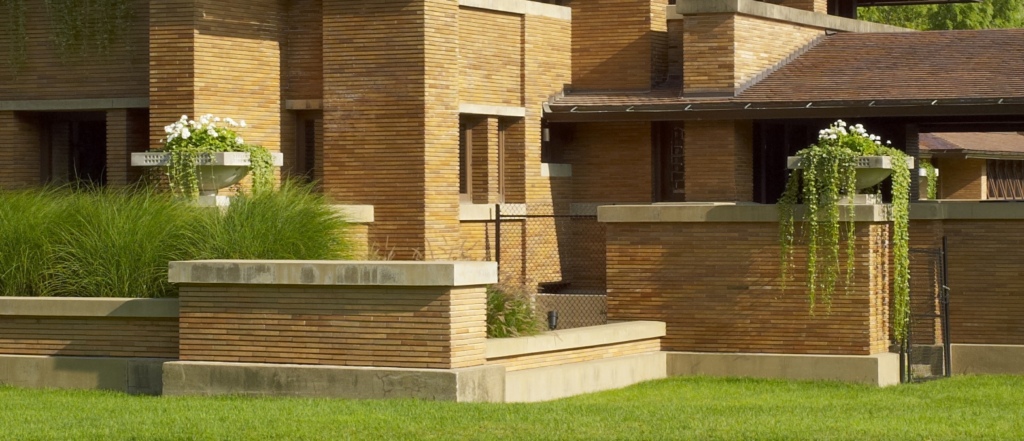
BRING THE OUTSIDE IN
Color, texture, and pattern are ways that Wright connected interiors to the landscape outside. Replicate the colors that you see outdoors, such as forest greens or desert tans, inside your home by painting the walls or choosing complimentary flooring and furnishings. Create tactile “invitations,” such as heavily woven textiles juxtaposed against smooth wooden furniture, and repeat patterns found in nature in decorative choices. Wright frequently incorporated plant patterns, such as abstracted sumac leaves or hollyhock blooms, into mural designs, stained glass windows, and carpet patterns. Finally, make arrangements of cuttings from your garden and place them around your home. Not only will you bring nature inside but the smell of many flowers favored by Wright, such as wisteria, can flood a room with scent.


